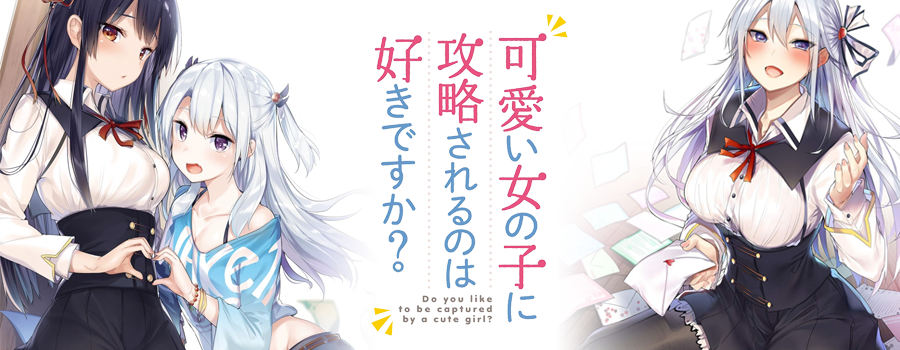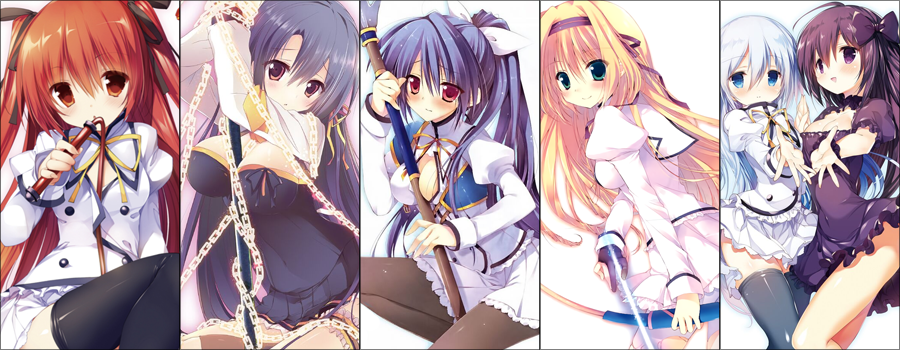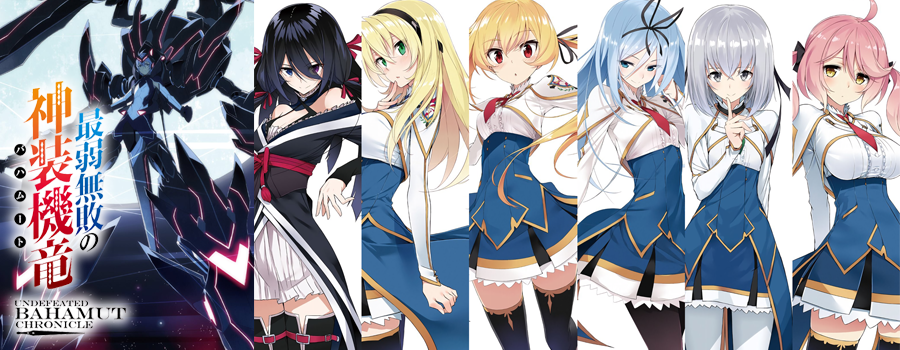
Heavy Object is a series of light novels set in a future where the world has fractured into four world powers, each possessing a different ideological basis for their government: the Legitimacy Kingdoms (LK) is composed of monarchies ruled by nobles, the Capital Corporations (CC) is a corporatocracy run by mega-corps, the Faith Organization (FO) is a union of various theocracies of different religions, and the Information Alliance (IA) is a cyberocracy heavily managed by artificial intelligence. With the threat of mutually assured destruction through nuclear weapons is no longer an issue, these factions have brought about the age of ‘clean wars’. While each of the four world powers may be locked in a never-ending war against all others, everything proceeds smoothly and systematically. There is a clear differentiation between safe countries and battlefield countries, wherein the safe countries of each world power are never directly harmed. Furthermore, the battles themselves are almost entire fought by Objects, 50m or so wide mecha that seem to make all other heavy weaponry obsolete.
These novels primarily follow the 37th Mobile Battalion of LK in particular, which is centered around the Object called Baby Magnum. This battalion includes our protagonist, Qwenthur, who is tagging along as a battlefield student in order to learn more about Objects with the goal of eventually becoming a disgustingly rich Object designer. It also includes his best friend Havia, who is a noble from a high-ranking family that joined the military to gain prestige in order to rise in his family’s succession order. Other key figures include the battalion’s sadistic but surprisingly compassionate and very beautiful commander Frolaytia and the Baby Magnum’s immature Elite pilot Milinda. As what is seen as the most troublesome battalion in the LK military, they’re sent to take part in the most annoying operations all across the world.
The novels start off with some world building about how normal soldiers did very little and how Objects did all the fighting. Qwenthur and Havia then break that rule and using their smarts to take down an Object by themselves which is seen as a never-before-seen miracle. The author seems to completely back track on that very quickly. Partly by saying that that was just propaganda to make the never ending wars easier to accept for those back in the safe countries, and partly by emphasizing that the 37th Battalion is always getting sent on bizarre missions. But regardless, the end result is that while this is a mecha series it is primarily from the perspective of infantry who often play the most important roles. The core of each story involves Qwenthur running into some sort of novel super weapon, usually an Object, going in to analyze it, figuring out how it works, and then coming up with and executing a plan to stop it.
Why this works so well is that this is a hard sci-fi series that heavily emphasizes the scientific principles being used in each weapon and the plans that Qwenthur executes usually involve getting pretty deep into how they work. It does gloss over a lot. The scale of things is ridiculous and it doesn’t really explain how it’s at all possible other than referring to mysterious JPLevelHMD reactors. A lot of the time it also feels kind of theoretical because it’s ignoring all the finer details that mess with things, though I suppose it could also be that at the level things are operating at these finer details just stop mattering. Still, this is a fictional series so I find that perfectly okay, and overall I was pretty impressed with what it did have and found it incredibly interesting. It has a lot of variety to the topics it touches on the course of the series which helps keep things from getting repetitive. At least to a degree. Even if the exact science changes somewhat, there’s actually not that much variety to the core concepts behind things so once you start to get a feel for that things do start getting more boring, though for me that wasn’t until the last quarter of the series.
The thing is that the series is heavily focused on this loop of Object destruction and pretty much nothing else. This largely comes down to the way the novel series was decided to be structured. The author wrote the series such that the first volume is required reading, but that after that any volume can be picked up and read without issue. There are obvious exceptions to that in that there’s a two-volume story where the second part requires reading the first part, and the finale essentially requires having read the entire series in order to fully pick up everything on. However, outside of that it does pretty much feel like each volume can stand on it’s own as an independent story.
The issue with that is that it means there’s absolutely no long-term progression in terms of anything. The end of each volume essentially serves as a reset and things go back to the status quo that was set up at the end of the first volume. That means there isn’t really any sort of overarching story. A single volume may have multiple interconnected conflicts, but the conflicts in one volume have pretty much nothing to do with the conflicts in any other. There’s world building in each volume and holistically there’s a lot of great world building. However, the world building feels really disconnected because it never really mixes together or interacts.
There’s also essentially no long-term character development or relationship development. The main cast is a lot of fun and thus easy to get invested in, but they have no development whatsoever. There are a lot of side characters that get development, but even if they do get minor mentions here and there, they’re only really ever important for a single volume (until the finale). The lack of any sort of progression makes the series overall feel like it’s getting kind of dull. As previously mentioned, the finale breaks this trend and tries to push through a lot of progression all at once while connecting everything that happened in all the other volumes. It’s a decent attempt, but that was way too large of an undertaking for two volumes, so it isn’t really able to pull it off all that well, and in the end, I found the ending just okay.
There is one more thing that this series has going for it that I don’t think is mentioned enough. It’s absolutely hilarious. It takes itself seriously at times and does genuinely tackle themes relating to war and conflict. But for the most part despite it being about war it’s incredibly lighthearted and does not take itself seriously at all. Everyone has absurdly exaggerated personalities that are manifesting themselves at all times, especially right in the middle of the action. It is completely and utterly absurd just how moronic Qwenthur and Havia get at times. And it’s even more absurd just how moronic they are all the time. They play really well off the side characters, and with the side characters constantly shuffling about that means a lot of variety to the comedy too. I definitely found this to be one of the highlights of the series.
The fan translation is also really good. It’s rougher than a professional translation in that it has lots of small mistakes here and there, but nothing too major. What makes it impressive though is that the prose in general is natural, fits the atmosphere, and flows well, and on top of that all the jargon and such seem to have been handled well. The art overall was also great, being high quality and having a lot of great character designs. I did feel that for a mecha focused series, the lack of emphasis on mecha in the art was kind of strange. The designs of most of the objects are included and while I think the designs are perfectly fine, the way they’re displayed and such felt kind of weak.
A hard sci-fi mech series that gets repetitive as it progresses due to a lack of overarching progression.
8/10









